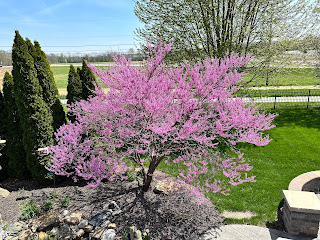Why grow lavender? Lavender face oil!
I love growing lavender, especially in areas that I walk past frequently. Brushing my hand against the flowers and inhaling the scent as I walk by is one of the little pleasures in my life! In addition to its beauty and scent in the garden, there are many uses for harvested lavender on the homestead - and good news - it's a fairly low-maintenance plant!
Some of the creative uses you may want to consider:
- Culinary: Lavender leaves and flowers can be used to add a unique flavor to dishes, desserts, and even drinks. Experiment with culinary lavender to add a fragrant touch to your recipes. Lavender lemonade is on my list of things to try.
- Crafting and DIY: Dried lavender flowers are a popular ingredient in potpourri, sachets, soaps, and other homemade crafts. Get creative and use lavender to infuse your home with its calming scent.
- Medicinal properties: Lavender has been used for centuries for its healing properties. It can be used in aromatherapy, applied topically for relaxation, or enjoyed as a calming tea.
There are two main ways to make lavender face oil: infusing a carrier oil with dried lavender flowers or blending a carrier oil with lavender essential oil. Both methods are relatively simple, but extracting the essential oil from my garden flowers would require special equipment. I'm not into that level of effort, so I used dried flowers and buds in my face oil! Infusing a carrier oil with dried lavender flower does take longer than blending with essential oil, but it results in a more subtle and natural-smelling oil.
Here's how to make it:
Ingredients:
- 1 ounce carrier oil (such as jojoba oil, sweet almond oil, or grapeseed oil). I used grapeseed oil in mine, as I had it on hand already.
- 1/2 cup of dried lavender buds/flowers
Instructions:
- Add the carrier oil to a clean glass bottle or jar.
- (Optional) Crush the dried lavender buds with a mortar and pestle.
- Add the dried lavender buds to the carrier oil in the bottle/jar. Ensure they are completely covered by the oil.
- If you didn't crush them previously, gently crush the buds in the oil. I used a muddling tool to crush mine inside the jar.
- Let the lavender buds steep in the carrier oil for several weeks, shaking it frequently.
- Store the lavender face oil in a cool, dark place for up to 1 year.
Tips:
- Ensure your buds and flowers are completely dry before using them. Fresh flowers are more prone to bacteria growth.
- Be sure to use a high-quality carrier oil that is appropriate for your skin type.
- Patch test the lavender face oil on a small area of your skin before applying it to your entire face.
- Lavender face oil can be used morning or night. Apply a few drops to your face and massage it in gently.
The author of this blog is not responsible for any damages or losses that may occur as a result of following the information on this blog. Do your due diligence when researching edible and medicinal plants.




Comments
Post a Comment